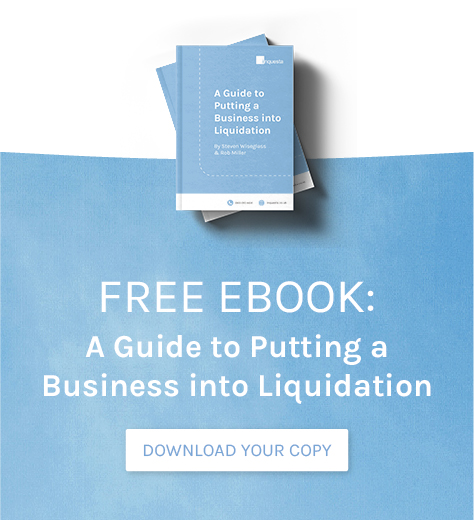You can have an excellent USP, a great product, a dedicated customer-base, and a busy business, but if you aren’t able to maintain a good cash flow, you are straddling a fine line between success and failure.
The smallest thing can push you over the edge and into the abyss if you aren’t careful. This blog will detail what is meant by cash flow in business, why cash flow is so important, how to identify cash flow problems, the best ways to solve them, and more.
What is Meant By Cash Flow in a Business?
Cash flow in a business is the measure of the net amount of cash/cash equivalents that both comes in, and goes out of your company during a set period of time. A positive cash flow is what all businesses aim for as it means that you have more cash coming in than leaving your account.
A company’s core ability to create value for its shareholders is determined by its ability to generate a positive cash flow over a sustained period of time.
Why is a Strong Cash Flow Important?
Ultimately, cash is the root of any successful business. Without money flowing into the company on a regular basis, failure will likely follow. All businesses — even the most successful ones — can experience periods of short-term financial troubles for all manner of different reasons. A strong cash flow is important as it can reduce possible negative impacts.

As an example, the impact of the COVID-19 pandemic forced a number of businesses to close down. A strong cash flow is what helped many survive during the tougher periods, while a weaker cash flow resulted in others going bust.
How Many Businesses Fail Due to Cash Flow Problems?
The world of business can be a cruel one. It is a sad reality that on average, one in five startups in the UK fail each year. And studies have pointed to the fact that around 80 to 85% of all small business failures come as a result of bad cash flow.
Being unable to balance outgoings with the amount of cash coming into the business is vital for all companies, but when one is only newly formed, it becomes even more vital for long-term viability.
With experience comes a deeper understanding of how best to manage your cash flow to ensure that you still have a means of paying your employees, your suppliers, and your landlords. The other alternative is to turn to a professional for immediate help.
Six Common Cash Flow Problems
In business, there are a great number of cash flow problems that can have a lasting impact on your business in both the short and long-term. These issues include: slow-payments, high overhead payments and seasonal demand, which can impact all manner of businesses, no matter the experience of its owners, the industry, or the location.
Common cash flow problems include:
Limited Cash Reserves
This issue is particularly common among small and new businesses. A limited cash reserve, or worse, having no cash reserve at all, can leave you unprepared for sudden changes.
Boosting your reserve will allow you to better weather the storm in the event of short-term problems or interruptions, allowing you to focus on the day-to-day running of the company.
Slow Payments
Slow-paying invoices, inconsistent handshake agreements and unreliable buyers can be a big problem if allowed to persist, as that money will need to feed back into operations.
Over time, consistent slow payments can create a huge backlog, and in turn, financial issues that could seriously impact your business and its cash flow.
Debt Repayment
Forms of debt repayment, either monthly or yearly can cause cash flow problems. If you cannot afford your current financing, or your situation has changed so you can no longer afford to keep up with repayments, you will likely find that more and more money is being sucked out of the cash flow reserves.
High Overhead
Overhead refers to ongoing business expenses that cannot be directly attributed to the creation of your product/service. Common examples of what would classify as an overhead cost include:
- Rent
- Administrative costs
- Utilities
- Insurance
High overhead expenses, or overhead expenses that you can no longer afford for any reason, will significantly damage your businesses cash flow until they are resolved.
Excessive Inventory
This is an issue that many companies dealing with the manufacturing or sale of goods will experience at some point.
It occurs when you purchase too much inventory, either by mistake, or in preparation of a particular sale/event that, until sold, will remain in your warehouse or sitting on a shelf. The money tied into these products is, in essence, your cash flow stagnating, potentially causing you serious issues down the road.
Seasonal Demand
This can be a tricky problem to tackle. It is a reality that some businesses will have significant upswings in business, and consequently significant down periods depending on certain seasons. Examples of this can be seaside cafes, fancy dress stores, and more.
A business in this position will require careful cash flow management and planning — particularly during the boom periods — to ensure that they do not face insurmountable cash flow problems during their low seasons.
How to Identify Cash Flow Issues
The main step in identifying cash flow issues is to undertake a cash flow analysis and take a look at the numbers. You should conduct a cash flow analysis statement which will list all of your incomings and outgoings in one, clear and concise place so you know exactly what you are faced with.

Your cash flow analysis statement should cover three specifics of your business finances:
- Operational activities: Money deriving from your operation
- Investment activities: Money stemming from your investments, including the purchase of equipment/property, dividends, etc.
- Financing activities: Your company loans/credit
Getting a clear insight into exactly how much you’re bringing in from your goods and services, as well as the amounts going out from loans and investments will give you a clear reflection of your financial health — as well as potentially help you to determine exactly where you are going wrong, and where you should seek to improve.
Ways to Solve Cash Flow Problems
Tackling the issue of solving your company’s cash flow problems will require you to improve two different aspects of your operation. You will need to bring in more money by raising prices, selling a valuable asset, and bill more regularly. You may also need to spend less by taking measures such as cutting costs and inventory.
Bring in More Money
It’s easier said than done, but a core way to solve cash flow issues is to bring in additional cash to your company. This can be done in a variety of different ways:
- Take payments more regularly: Late payments can be crippling for companies. It is important, if you are to solve potential cash flow problems, that you stay on track with all invoices and payments due to come in. It may be worth considering appointing somebody to specifically follow up on late payments, or consider offering incentives for quick payments.
- Sell a valuable asset: While selling an essential asset would not be a good idea, it may be worth considering offloading items that you either do not use/need anymore, or assets with a value that far exceeds their use in your business. While this may be only a one-time injection of funds, it can help to improve your cash flow problems in the short-term.
- Raise Prices: While it may be an unpopular move amongst your customers, it is important that a business consistently analyses their pricing and increases if it has been a while. Look at similar businesses, are there prices significantly more than yours? Being the cheapest can get you more business, but it can cost you in the long run.
Spend Less Money
Cutting costs may feel like an obvious solution to solving cash flow problems. However it is important that you show restraint as cutting costs should not go hand in hand with totally losing your company values. Ways to spend less money to solve your cash flow issues include:
- Cut Costs: Look at your cash flow analysis and see exactly what you are spending your money on. Does anything stand out as costing a lot of money? Can it be sacrificed? For example, are you paying exorbitant amounts for your premises when a lower cost location would suffice? Do your existing suppliers cost more than the industry standard?
- Better inventory management: Proper inventory management is vital if your business is to operate with a positive cash flow. Too much inventory can leave you with static stock that you may struggle to sell. While too little could impact your sales figures. Find that sweet spot.
If you find yourself faced with cash flow problems impacting your operations — whether it be short term issues, or consistent long-term cash flow difficulties, it is important that you seek out methods of turning the tide as soon as possible.
Failure to understand how to identify cash flow problems and ascertain what you can do to improve your situation could cost you the future of your business.
The Inquesta team has worked with businesses of all industry and size to support them in issues of financial insecurity. Our experts have all the skills required to assess your finances and advise you on the best steps moving forwards.
For more information on what Inquesta can do to assist you with cash flow issues, contact a member of our team today or book a free consultation.



